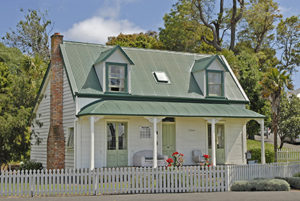Tylee Cottage
Tylee Cottage Artist-in-Residence Programme

Tylee Cottage, Whanganui
The artist-in-residence programme at Tylee Cottage, a renovated historic building built in 1853, was established in 1986 as a partnership between the Te Whare o Rehua Sarjeant Gallery the Whanganui District Council and the QE11 Arts Council of New Zealand. The programme is now solely funded by Creative New Zealand’s Toi Uru Kahikatea (Arts Development) Investment Programme and managed by the Sarjeant Gallery.
The programme is one of the longest running of its kind in New Zealand and in 2016 we celebrated its thirtieth anniversary. Over 50 artists have been in residence including some of the country’s leading practitioners. The residency provides a unique opportunity for an artist to develop a new body of work under less pressured circumstances.
As a result, the residency has the dual benefit of bringing exciting new artists into the city and allows us to include innovative contemporary new work in our exhibition programme that is a unique reflection of each of the artist’s time spent in residence. The residency programme attracts a high calibre of applicants.
Visit here for a list of past residents.
Tylee Cottage residents for 2025 are confirmed as Ming Ranginui (February-June 2025) and Isabella Loudon (July-November 2025).
The next Tylee Cottage Artist in Residence application round will open in mid-2025. Watch Facebook and Instagram to catch announcements.

